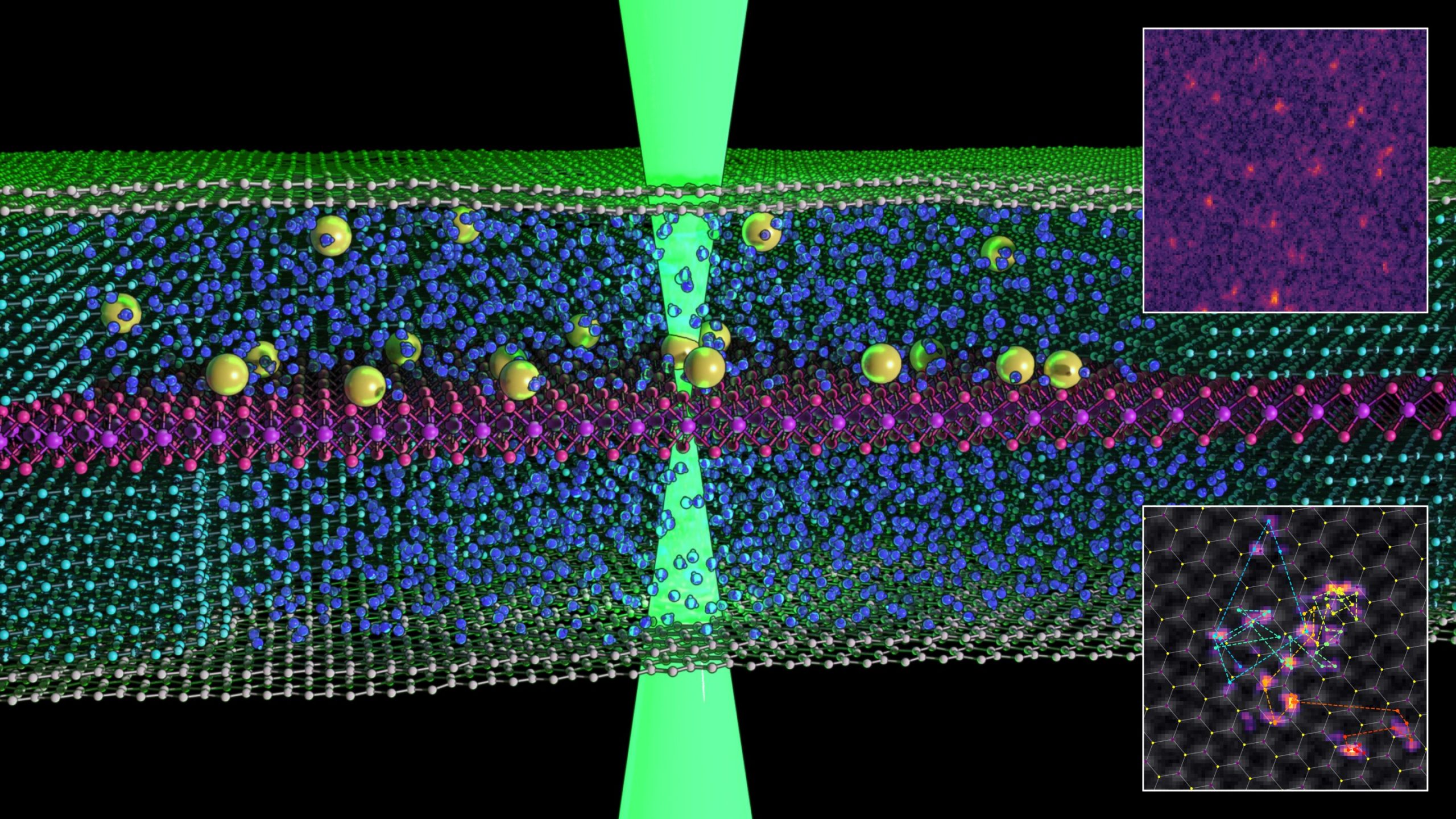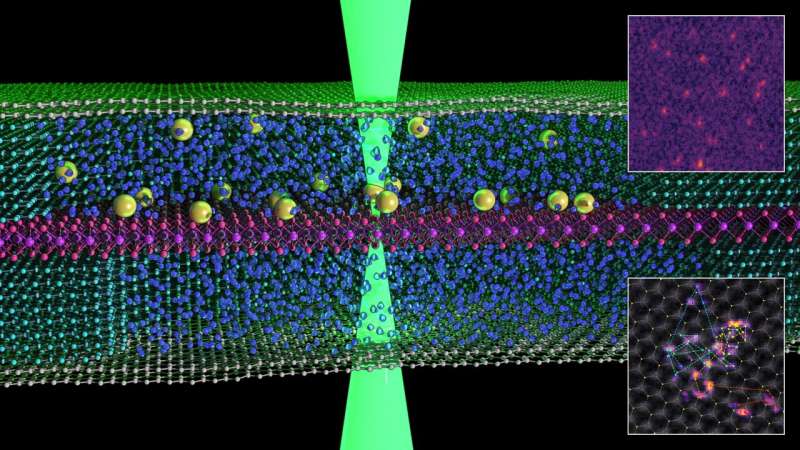

Graphene scientists from The University of Manchester have created a novel “nano-petri dish” using two-dimensional (2D) materials to create a new method of observing how atoms move in liquid.
Publishing in the journal Nature, the team led by researchers based at the National Graphene Institute (NGI) used stacks of 2D materials like graphene to trap liquid in order to further understand how the presence of liquid changes the behavior of the solid.
The team were able to capture images of single atoms “swimming” in liquid for the first time. The findings could have widespread impact on the future development of green technologies such as hydrogen production.
When a solid surface is in contact with a liquid, both substances change their configuration in response to the proximity of the other. Such atomic scale interactions at solid-liquid interfaces govern the behavior of batteries and fuel cells for clean electricity generation, as well as determining the efficiency of clean water generation and underpinning many biological processes.
One of the lead researchers, Professor Sarah Haigh, commented, “Given the widespread industrial and scientific importance of such behavior, it is truly surprising how much we still have to learn about the fundamentals of how atoms behave on surfaces in contact with liquids. One of the reasons information is missing is the absence of techniques able to yield experimental data for solid-liquid interfaces.”
Transmission electron microscopy (TEM) is one of only few techniques that allows individual atoms to be seen and analyzed. However, the TEM instrument requires a high-vacuum environment, and the structure of materials changes in a vacuum. First author Dr. Nick Clark explained, “In our work we show that misleading information is provided if the atomic behavior is studied in vacuum instead of using our liquid cells.”
Professor Roman Gorbachev has pioneered the stacking of 2D materials for electronics but here his group have used those same techniques to develop a “double graphene liquid cell.” A 2D layer of molybdenum disulfide was fully suspended in liquid and encapsulated by graphene windows. This novel design allowed them to provide precisely controlled liquid layers, enabling unprecedented videos to be captured showing the single atoms “swimming” around, surrounded by liquid.
By analyzing how the atoms moved in the videos and comparing to theoretical insights provided by colleagues at Cambridge University, the researchers were able to understand the effect of the liquid on atomic behavior. The liquid was found to speed up the motion of the atoms and also change their preferred resting sites with respect to the underlying solid.
The team studied a material that is promising for green hydrogen production but the experimental technology they have developed can be used for many different applications.
Dr. Nick Clark said, “This is a milestone achievement and it is only the beginning—we are already looking to use this technique to support development of materials for sustainable chemical processing, needed to achieve the world’s net zero ambitions.”
How gas nanobubbles accelerate solid-liquid-gas reactions
Nick Clark et al, Tracking single adatoms in liquid in a Transmission Electron Microscope, Nature (2022). DOI: 10.1038/s41586-022-05130-0
University of Manchester
Citation:
Graphene scientists capture first images of atoms ‘swimming’ in liquid (2022, July 27)
retrieved 27 July 2022
from https://phys.org/news/2022-07-graphene-scientists-capture-images-atoms.html
This document is subject to copyright. Apart from any fair dealing for the purpose of private study or research, no
part may be reproduced without the written permission. The content is provided for information purposes only.

